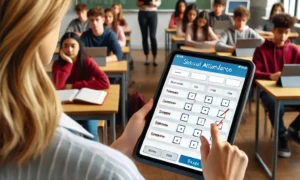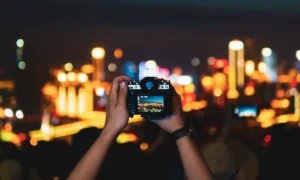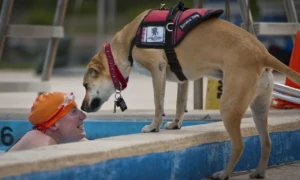How To Request Media Coverage For An Event: Step-By-Step Guide
Embarking on the journey of securing media coverage for your event within the dynamic realm of event management is pivotal for its success. Whether orchestrating a product launch, a philanthropic endeavor, or an industry conference, the ability to captivate reporters and media outlets can exponentially amplify an event’s impact. However, navigating the intricate realm of media coverage demands finesse, strategic planning, and a nuanced understanding of How to Request Media Coverage for an Event.
Navigating the Media Landscape
- Know Your Audience:
Before delving into the intricacies of How to Request Media Coverage for an Event, it is imperative to understand your event’s target audience. Identifying the publications, channels, and platforms that resonate with attendees ensures that your media outreach aligns with their preferences.
- Building Media Relationships:
Establishing enduring relationships with key journalists is a strategic investment. Engaging with industry reporters, following their work, and cultivating connections through social media enhance the likelihood of media interest in your event.
- Media Outlet Research:
Thoroughly researching and understanding various media outlets’ focus, tone, and audience is essential for knowing How to Write a Press Release for an Event. Tailoring your media outreach to align with specific publications or channels enhances your coverage opportunities.
Crafting a Captivating Narrative
- Identify the Unique Angle:
Every event has a story, and discovering a genuinely unique angle adds depth to your media pitch. Whether it’s groundbreaking technology, a compelling speaker, or a charitable initiative, emphasize elements that set your occasion apart and make it newsworthy.
- Craft a Captivating Press Release:
Knowing How to Request Media Coverage for an Event serves as a cornerstone in the art of positive and successful media coverage. Ensure it is concise, engaging, and provides essential information, including event logistics, key speakers, and the overarching narrative. Incorporate quotes, visuals, and multimedia elements to enhance its appeal.
- Tell a Story, Not Just an Event:
Beyond logistical details, focus on telling a compelling story. Emphasize the impact of your event on attendees, industry trends, or the community. Journalists are drawn to narratives that evoke emotion and provide a broader context beyond the event itself.
Building a Comprehensive Media Kit
- Event Fact Sheet:
Compile a fact sheet with essential event information, serving as a quick reference for journalists and streamlining their coverage process.
- Speaker Bios and Headshots:
Provide detailed bios and professional headshots of key speakers, adding a personal touch to the media kit and helping reporters connect with the personalities associated with the event.
- High-Quality Visuals:
Visual content is a potent tool in capturing media interest. Include high-quality photos, infographics, and videos showcasing the event’s atmosphere, key moments, and overall ambiance.
- Previous Media Coverage:
If applicable, include snippets of past media coverage or testimonials. Positive reviews enhance your event’s credibility and make it more appealing for media coverage.
Crafting the Perfect Pitch
- Personalization is Key:
Avoid generic pitches. Personalize your pitches for each outlet or journalist, demonstrating an understanding of their interests and aligning your event with their coverage areas.
- Concise and Compelling Subject Lines:
Given the influx of pitches, a compelling subject line is crucial for grabbing attention. Keep it concise, enticing, and indicative of the unique aspect of your event.
- Highlight Relevance to Their Audience:
Clearly articulate why your event is relevant to the journalist’s audience. Demonstrate an understanding of their readership or viewership and how your event aligns with their interests and concerns.
- Offer Exclusive Opportunities:
Incentivize media coverage by providing exclusive opportunities to reporters, such as interviews with key speakers or behind-the-scenes access. Exclusive access adds an extra layer of appeal for journalists.
Managing Media Relationships During the Event
- Media Check-In and Assistance:
Designate a media check-in area with dedicated staff to assist reporters. Provide them with event materials, answer questions, and ensure they have all the resources needed for comprehensive coverage.
- Scheduled Press Briefings:
Organize scheduled press briefings or interviews with key speakers, providing journalists with firsthand information and opportunities for exclusive content.
- Real-Time Updates:
Keep the media informed with real-time updates on event highlights, key moments, and any unexpected developments. This keeps journalists engaged and provides fresh content for their coverage.
Post-Event Follow-Up
- Thank You Notes:
Express gratitude to journalists who covered your event. Send personalized thank-you notes or emails acknowledging their contribution to the event’s success.
- Provide Post-Event Materials:
Share post-event materials, including event summaries, visuals, and testimonials. These materials can be valuable for reporters working on follow-up or extended coverage.
- Request Feedback:
Seek feedback from journalists about their experience covering the event. This input is valuable for refining your media outreach approach for future events and learning How to Write a Press Release for an Event.
In Conclusion
Mastering the art of knowing How to Write a Press Release for an Event involves a delicate dance between storytelling, relationship-building, and strategic communication. From the initial pitch to post-event follow-up, each stage requires careful planning, creativity, and a profound understanding of your event and the media landscape. In an era where information is abundant and attention spans are fleeting, the ability to craft a story that captivates the scroll and touches the soul is vital for a successful media coverage strategy.


























































